
Royal
Holland Lloyd S.S. Gelria - 1913 - renamed Gradisca in 1935
to 1950
Use Google Chrome for this Web Page to load perfectly!
Please Note: All ssMaritime and other related maritime sites are 100% non-commercial and privately owned, thus ssmaritime is NOT associated with any shipping company or any other organisation! Although the author has worked and been involved in the passenger shipping industry for well over 60 years, but due to his old age and poor health, he was forced to retire. Yet, he has completed well over 1,360 Classic Liners, Passenger-Cargo Liners as well as humble converted C3 converted Migrant Liners, which has transported countless thousands folk to the new world, as well on vacations’. I trust the features online will continue to provide Classic Liner and Ship enthusiasts both the information they are seeking, but more so provide a great deal of pleasure and relive many happy memories!
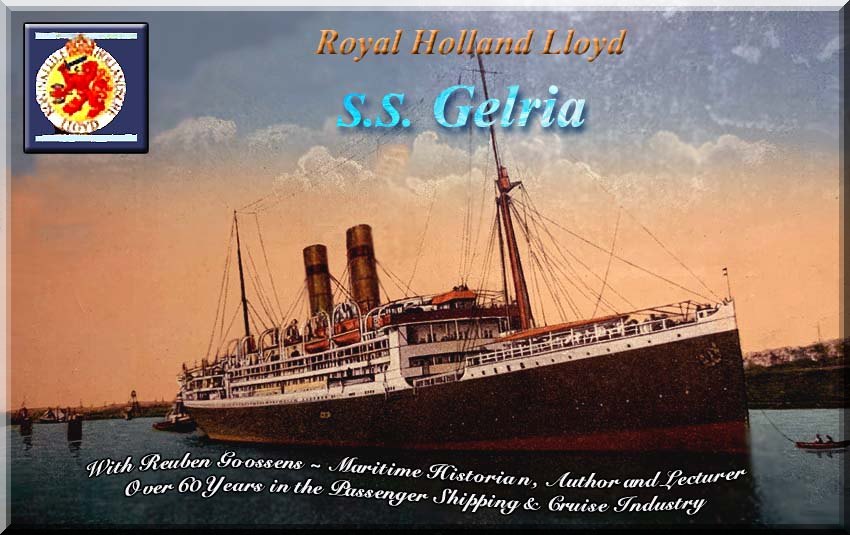
A fine
colour version of the
Please Note:
Postcards, photographs & other images are from the
author’s private collection, unless stated otherwise.
A special thank you
to ssmaritime supporters for their kind assistance.
The company was founded in 1899 in order to
transported cattle and cargo between
The company's roots lie
in “Zuid-Amerika Lijn” (ZAL) the “South
America Line”, which was founded in
ZAL was dissolved in 1908 after it found itself
in financial difficulties. At the instigation of the “
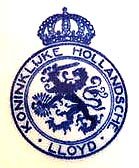
The official “
They built an amazing and an impressive fleet of Passenger-Cargo liners in fact by 1914 the company had five magnificent passenger ships with a tonnage between 7,291 and 13,911 GRT (Gross Registered Tons). Their names were ”Hollandia”, “Frisia”, “Zeelandia”, “Gelria” and the short lived “Tubantia” as well as four cargo ships whose names all ended in … “land”.
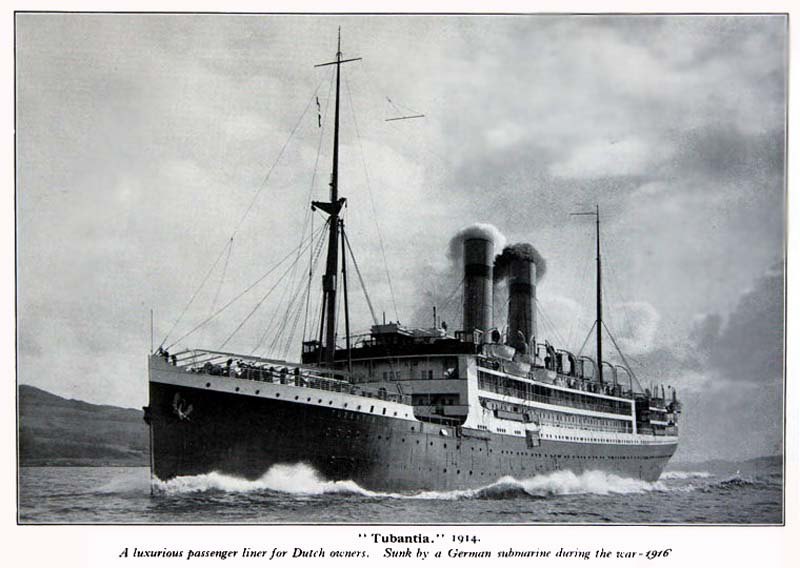
Identical sister
ship to the Gelria, is the
In 1913/14 they built their two finest
passenger-cargo liners both offered exceptional luxurious
accommodations and the most suburb pubic venues, especially in
First and Second Classes. For several years these ships also made
calls to
The “
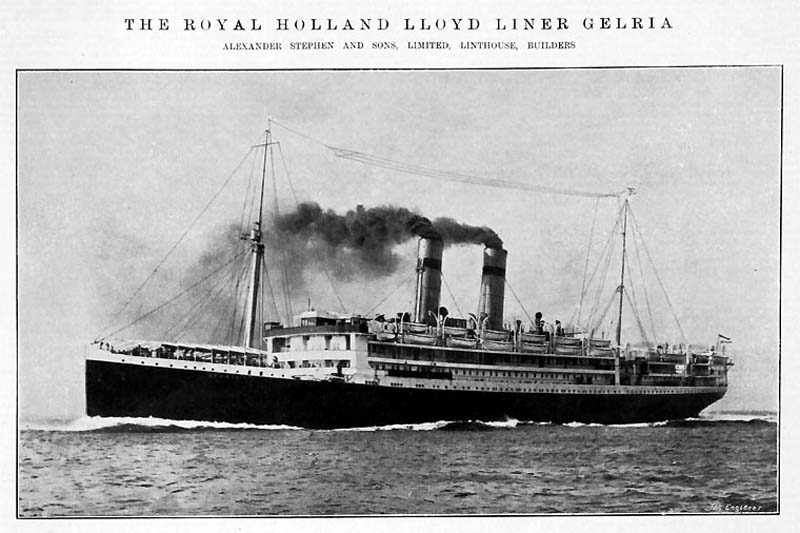
The
Having been fully crewed and stocked up the
fine looking luxury two funnelled, two mast 13,868 GRT (Gross
Registered Ton) liner was ready to depart for her maiden voyage
on November 5, 1913, from
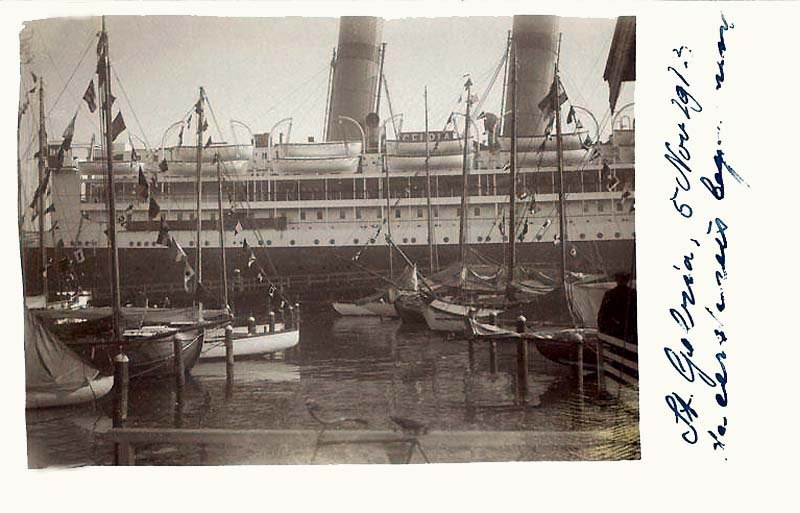
The writing at the side simply states that this was her first voyage on the said date
Thank you for
sending it
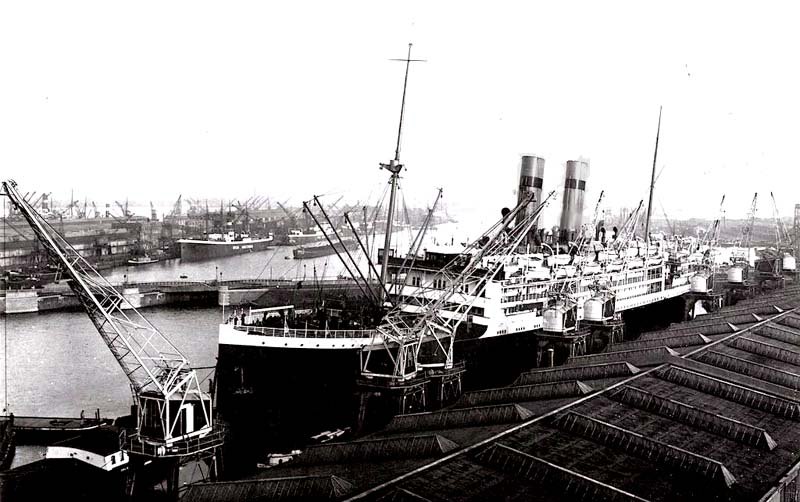
Thank you again
As built the
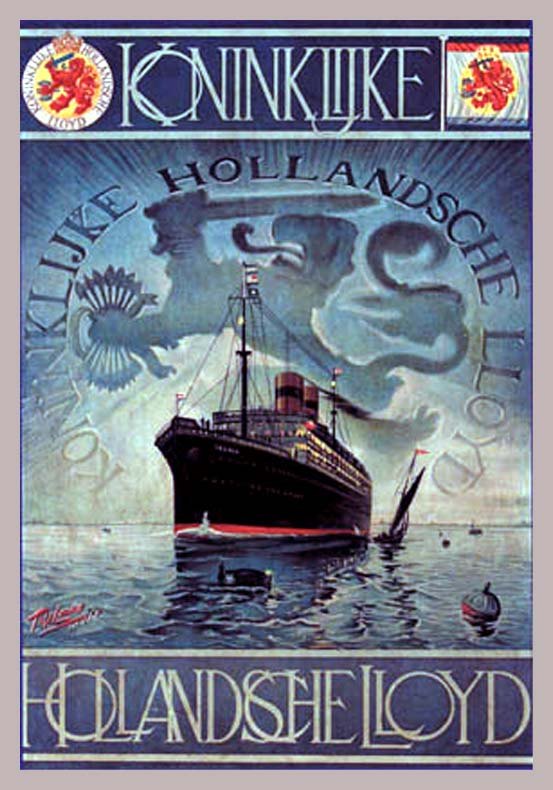
A Royal Holland
Lloyd promotional poster
There was no doubt at all that the Gelria in her day was an extremely luxurious ship in fact it was so much so that the British publication “Shipping Illustrated’ declared that she was “the ship of the year”.
Her public venues were simply spectacular, a
lounge decorated in an empire style with amazing Dutch style,
with a raised gallery for an orchestra playing; there was also a
luxurious smoking room. And there was something that was
generally not heard of on ships in those days, there was a
telephone in all First Class super comfortable cabins.
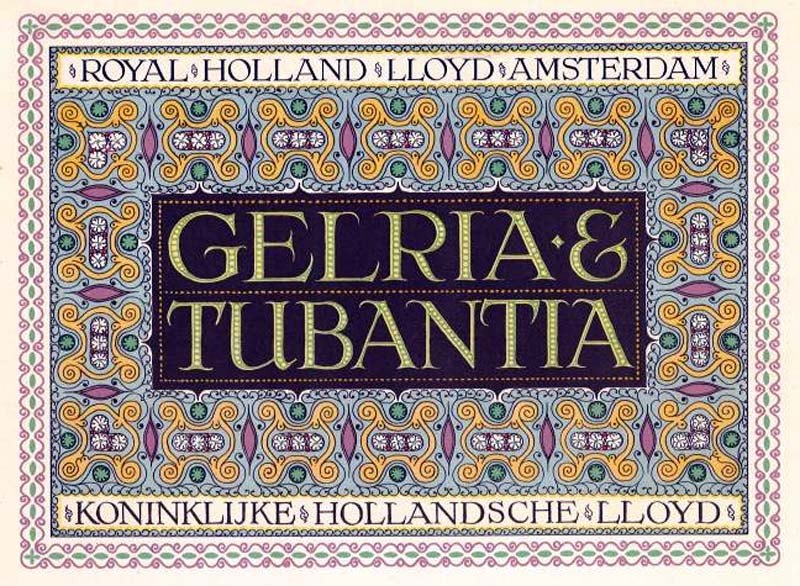
Part of a brochure released in 1914 after the release of the “Tubantia”
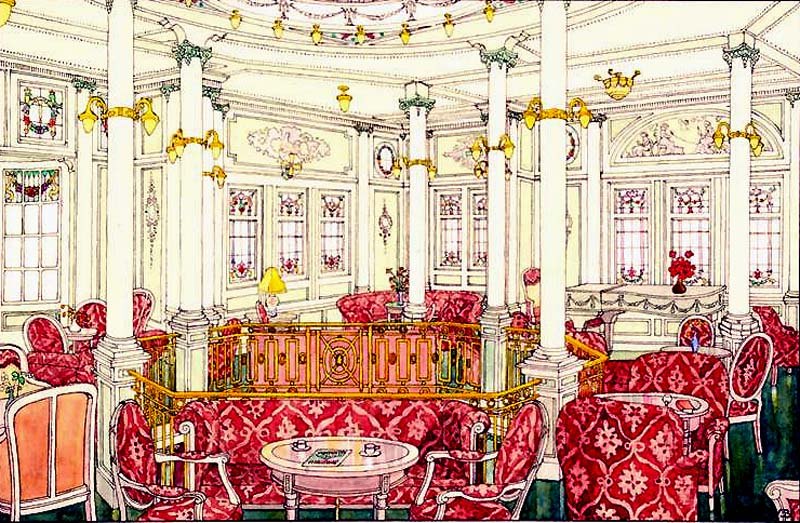
An artist impression of the grandiose Social Hall, see a small photo of this venue below left
The artist was
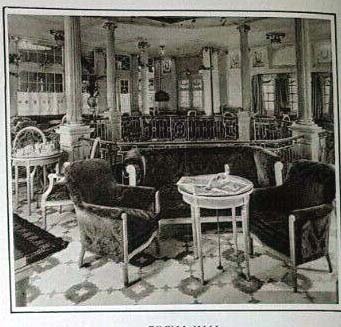 -
-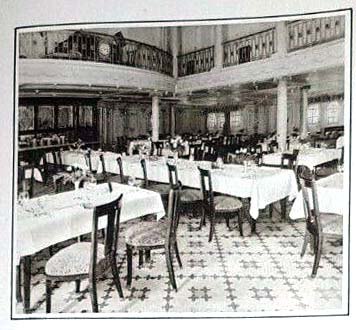
Left: The
Social Hall & Right: The multi level Dining Room
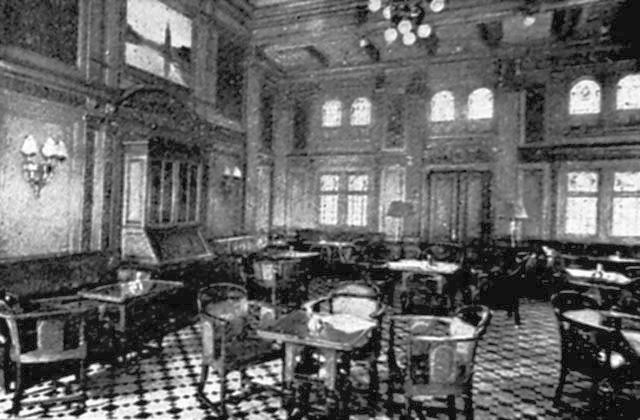
The huge two level
Smoking Room

A typical outside
Cabin
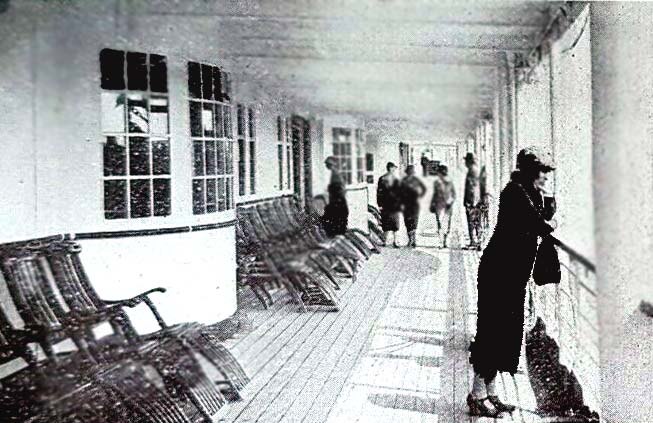
Promenade Deck
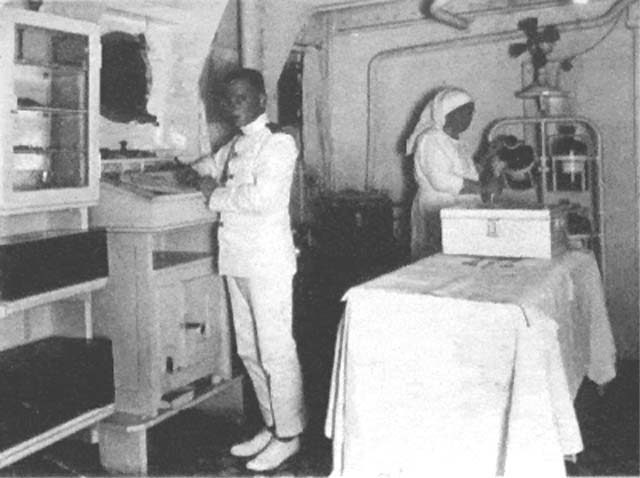
Like most liners
there is always a doctor’s office and an Infirmary
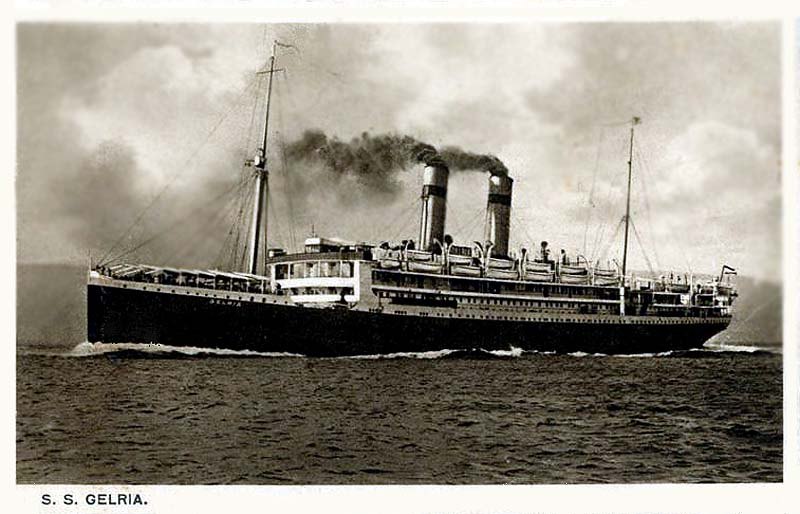
She was fitted with two 4 cylinder quadruple
expansion steam engines providing an excellent service speed of
16 knots. Although carrying a large number of passengers, she
also had four cargo holds, 2 forward and 2 aft and she had a
grain capacity of 338.000 cubic ft, and a bale capacity 357.000
cubic ft.
The S.S.
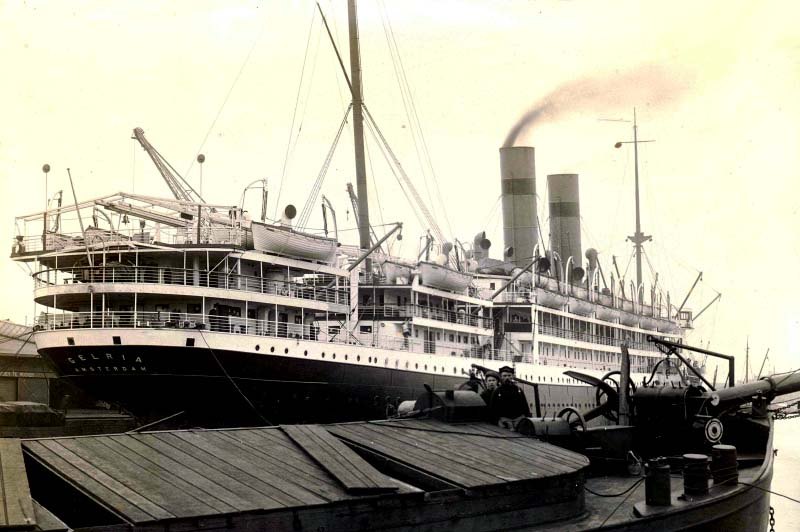
The Gelria is seen
berthed in
On March 12, 1919 the
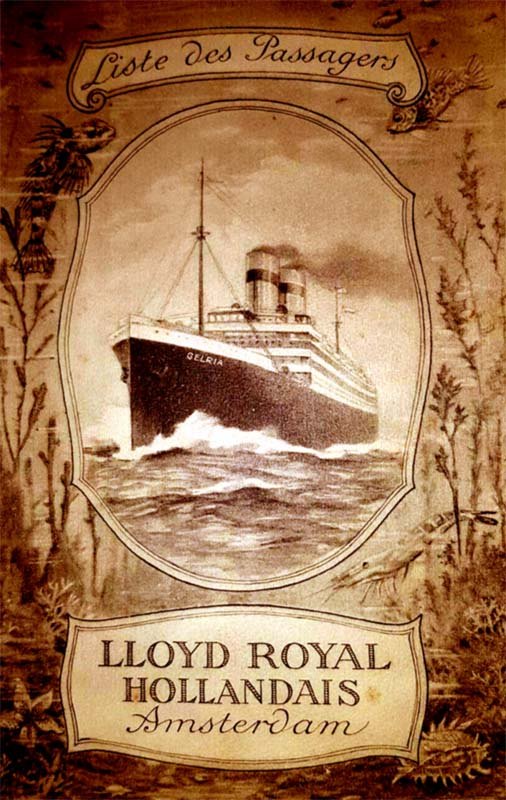 -
-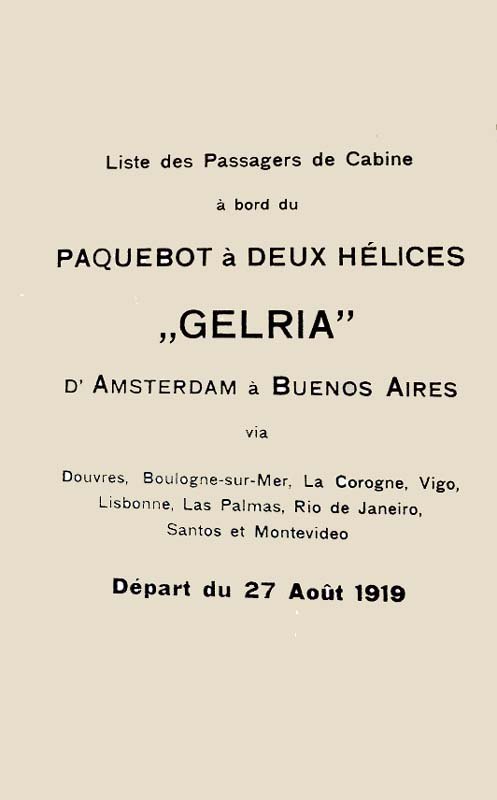
French 1919 Passenger list
In 1920 she operated luxury cruises to Madeira
and the
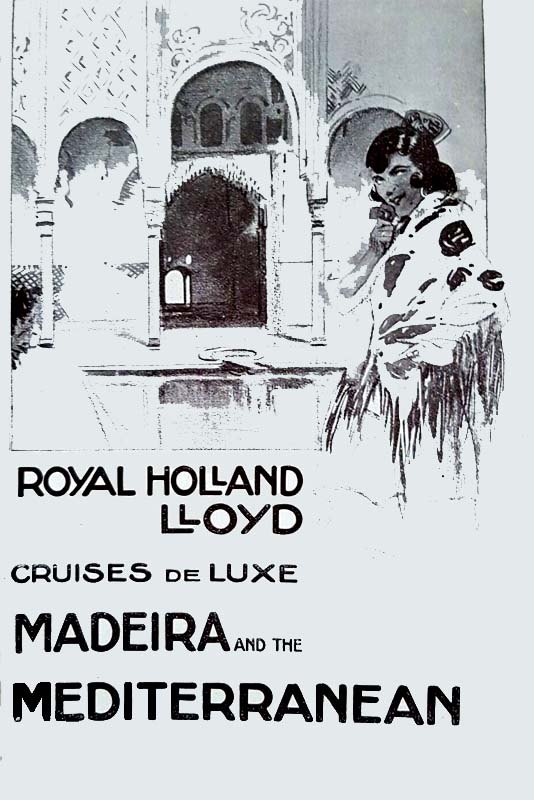
Above: The 1920 luxury Cruise brochure & Below: The Short Voyages brochure
Thank you for
sending it
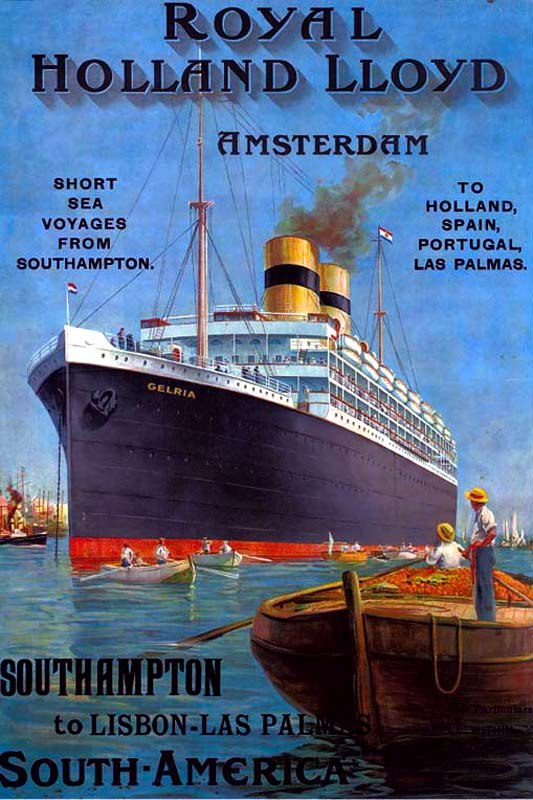
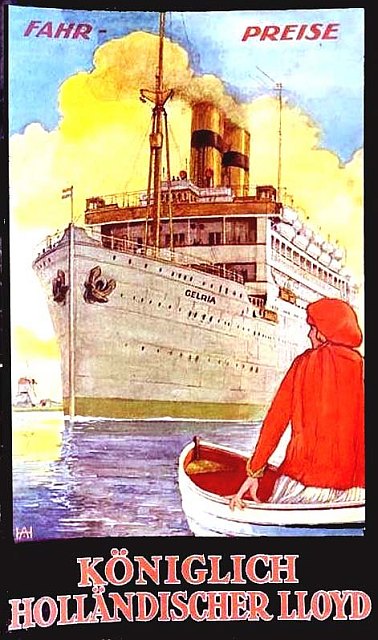 -
-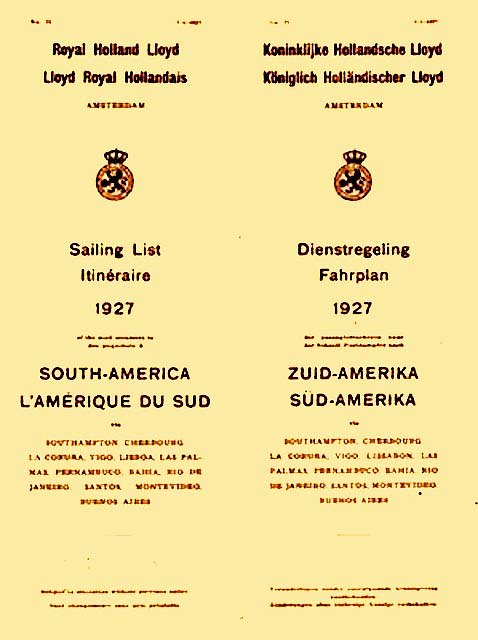
Left: A
German sailing schedule & Right: An English, French,
Dutch & German sailing schedule from 1927
 The S.S.
Gelria was without a doubt one of the most popular ships in
Europe and the UK at that time, in fact she was favoured by many
famous people, for example, on January 27, 1927, the much loved
British queen of crime, “Agatha Christie” had
booked a “Suite de-luxe” and boarded the Gelria at
Southampton and she sailed across the Atlantic in order to spend
the winter in the Canary Islands, being one of the stops the ship
made to South America. But there was an never ending list of the
well known passengers. In addition to all the grandiose luxury of
First and Second Class, in Steerage there would always be a
variety of migrants looking for a new life, such as many refugees
who were escaping Eastern Europe, such as Polish farmers and
other poor, as well as Jews who suffered extreme anti-Semitism!
The S.S.
Gelria was without a doubt one of the most popular ships in
Europe and the UK at that time, in fact she was favoured by many
famous people, for example, on January 27, 1927, the much loved
British queen of crime, “Agatha Christie” had
booked a “Suite de-luxe” and boarded the Gelria at
Southampton and she sailed across the Atlantic in order to spend
the winter in the Canary Islands, being one of the stops the ship
made to South America. But there was an never ending list of the
well known passengers. In addition to all the grandiose luxury of
First and Second Class, in Steerage there would always be a
variety of migrants looking for a new life, such as many refugees
who were escaping Eastern Europe, such as Polish farmers and
other poor, as well as Jews who suffered extreme anti-Semitism!
During the summer of 1928 Gelria headed to the
It may have been during the aforementioned refit, but it is not quite known when she was painted all white with a thin green ribbon surrounding her upper hull, but whenever this actually occurred she certainly looked magnificent as can be seen below the painting of her in drydock.
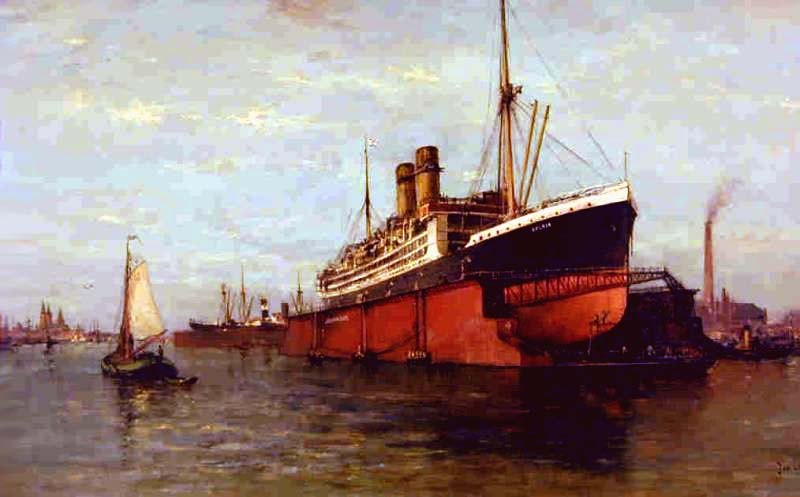
A painting of the
By the artist
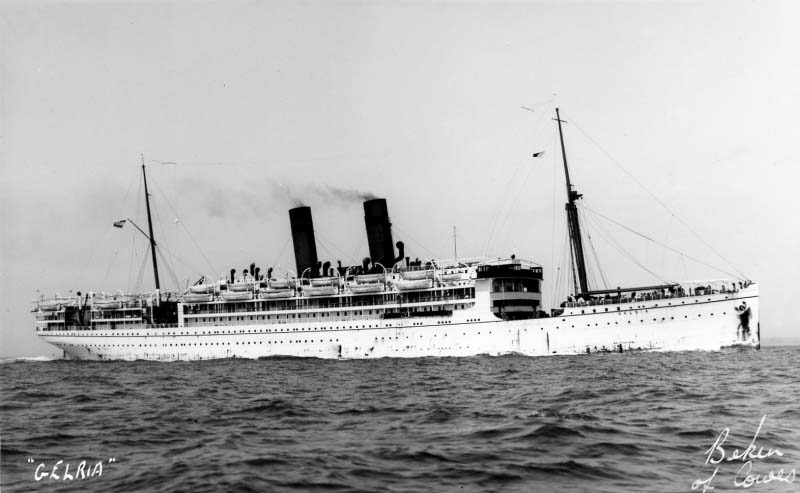
Thank you for
sending it
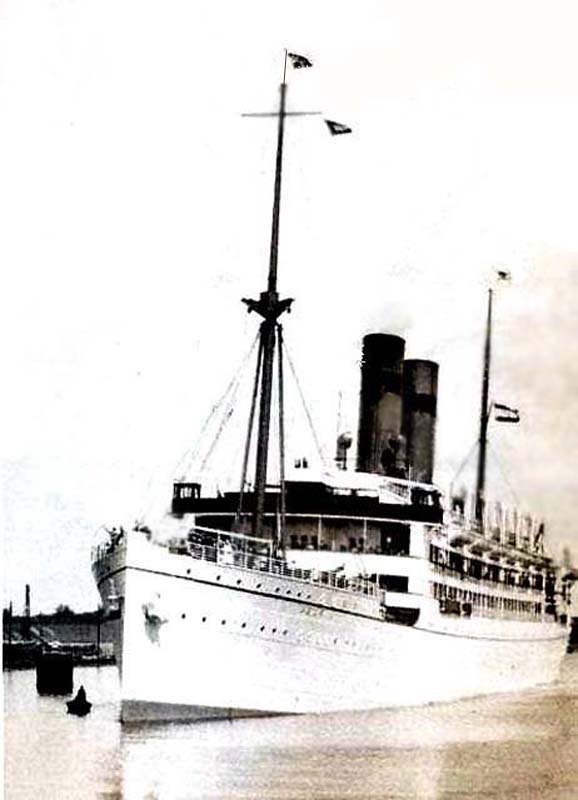
A fine bow shot of
the
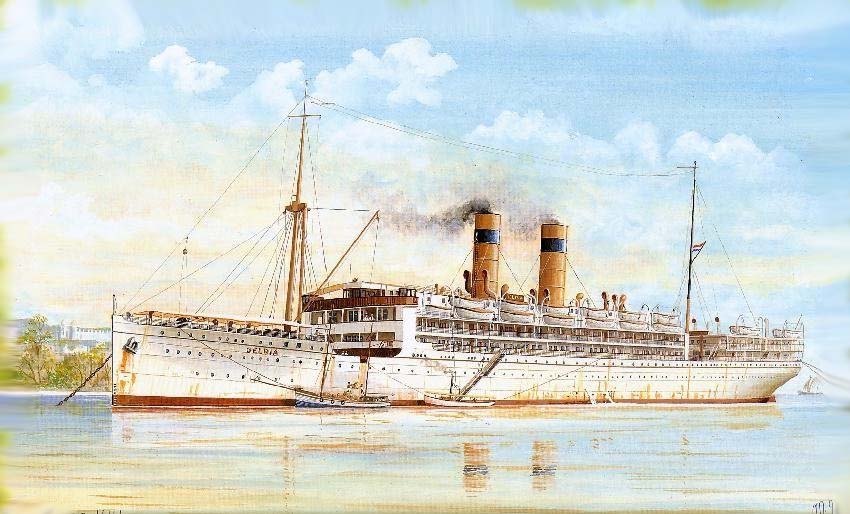
A delightful
artist’s impression of the
Thank you for
sending it
As the world had gone into a deep depression,
it was decided to lay her up again at
However the
On August 29, 1935 she was sold to the Italian
government and she was given a refit and when competed she was
placed under the management of
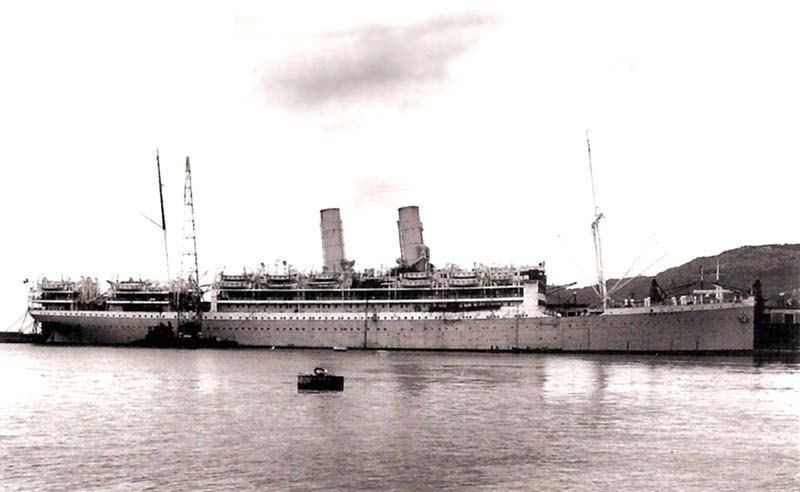
The Gradisca is seen during the Abyssinian war
In addition she made a number of voyages to
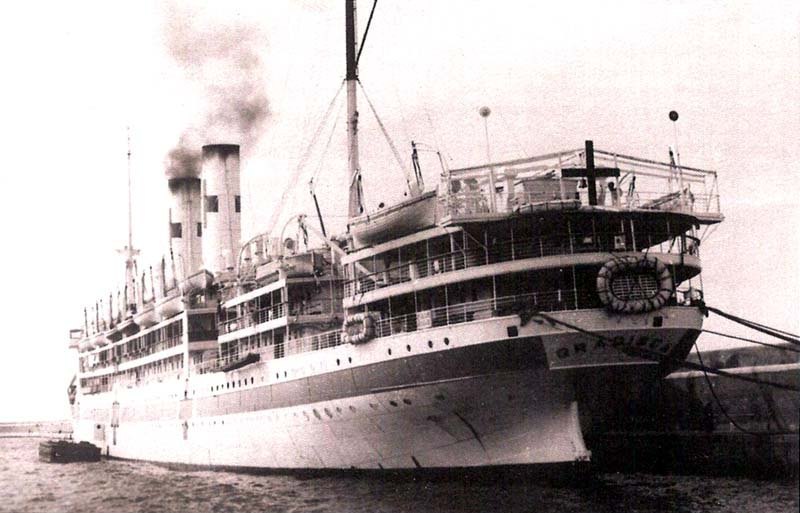
The Gradisca seen as a Hospital ship
On October 3, 1943, following the
On October 28, 1944 she was during a voyage
from Salonika to
She became a British war prize after the war, and she was duly returned to her Italian owners and she was refitted and repainted all white again, yet they continued to use her as a troopship as she was suitable for the role to bring soldiers home.
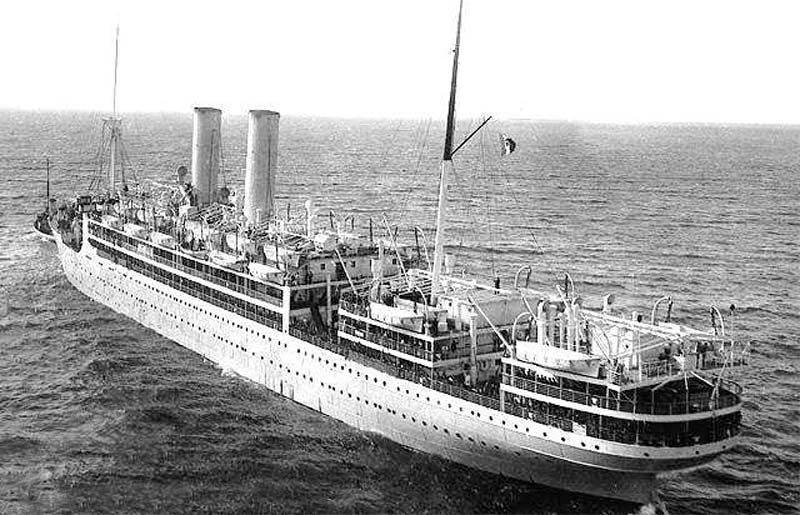
The
However, during a voyage from
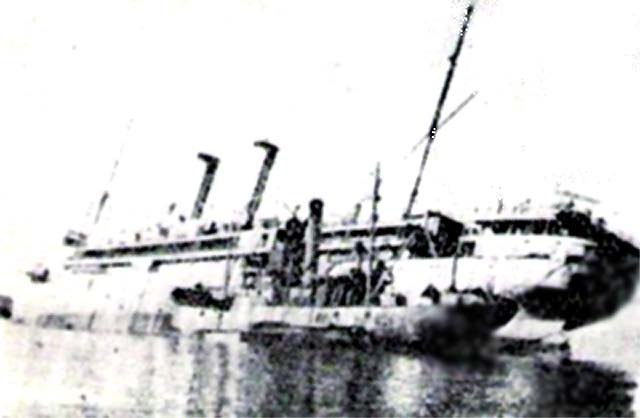
The Gradisca is
seen aground on
She was eventually salvaged and refloated on
July 9, 1947, and was then laid up at
Specifications
& General Details:
Names:……….………………………..
……………………………………………..Gradisca - 1935 to 1950.
Owners…………….…………………..“
……………………………………………..Italian Government - 1935 to 1950.
Operators:….…………………………“
……………………………………………..
……………………………………………..German Navy - 1943 to 1945.
……………………………………………..Italian Government - 1945 to 1949.
……………………………………………..Breakers 1949 to 1950.
Built
by:
………………………………
Alexander Stephen & Sons Ltd.,
Vessel
Type: …………………………Steel,
two funnelled, two mast passenger cargo ship.
Delivered:…………………………… October 8, 1913.
Maiden Voyage:….……………….November 5, 1913.
Tonnage:……………………………..13.868 GRT, 8.121 NET, 8.260 DWT.
Length:………………….…………….170.68m - 541.1 ft.
Beam:…………………………………..20.05m - 65.8 ft.
Draught:……………………………….28.2 ft - 9.1 m.
Propulsion:…………………………..Two 4-cyl De Laval steam geared turbines - 44,500 kW (59,700 SHP) combined.
Propellers:
…………………………..Two.
Passengers:………………………….1,444 passengers - 235 First, 224 Second and 135 in Third Class, 900 in Steerage - as built.
........................................1,287
passengers - 233 First Class, 350 Second Class and 704 Third
Class - after the 1928 refit.
Crew:…………………………………..330.
*************************
Remembering
the Delightful -
Of the “
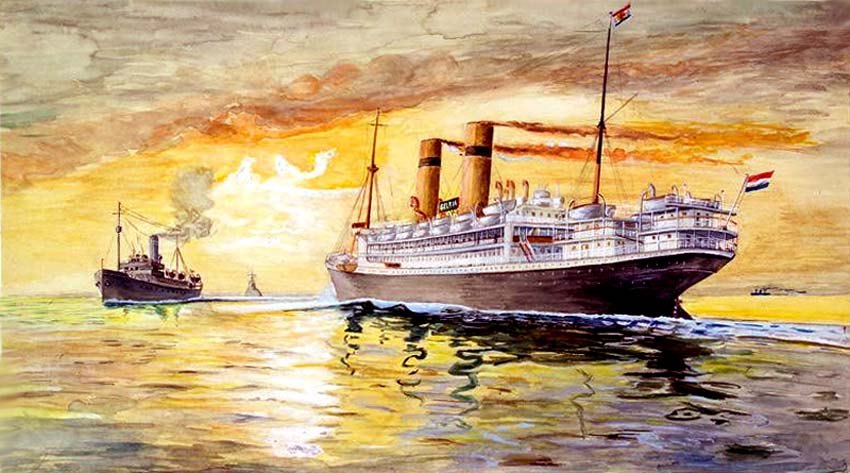
A fine
artist’s impression of the
By an unknown
artist
“Blue Water Liners sailing to
the distant shores.
I watched them come, I watched them go and I watched them die.”
Featuring over 1,360
Classic Passenger Liners, Passenger-Cargo Liners & Classic
Cruise Ships!
Or ENTER
HERE
For interest: Sadly an email service to
ssMaritime is no longer available, due to the author’s old
age and chronic illness as well as being disabled, etc. In the
past ssMaritime received well over 120 emails per day, but
**************************
ssMaritime.com & ssMaritime.net
The Author has been
in Passenger Shipping & the Cruise Industry for well over 60
years
In addition he was
the founder of “Save the Classic Liners Campaign” in
1990.
Please Note: ssmaritime and associated
sites are 100% non-commercial and the author seeks no
funding or favours of any shape or form, never have and never
will!
Photographs on ssmaritime and associate
pages are by; the author or from the author’s
private collection. In addition there are some images that have
been provided by Shipping Companies and private photographers or
collectors. Credit is given to all contributors. However, there
are some photographs provided to me without details regarding the
photographer/owner concerned.
This notice covers all pages; although,
and I have done my best to ensure that all photographs are duly
credited and that this notice is displaced on each page, that is,
when a page is updated!
ssMaritime is owned & ©
Copyright by